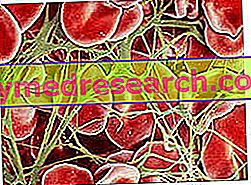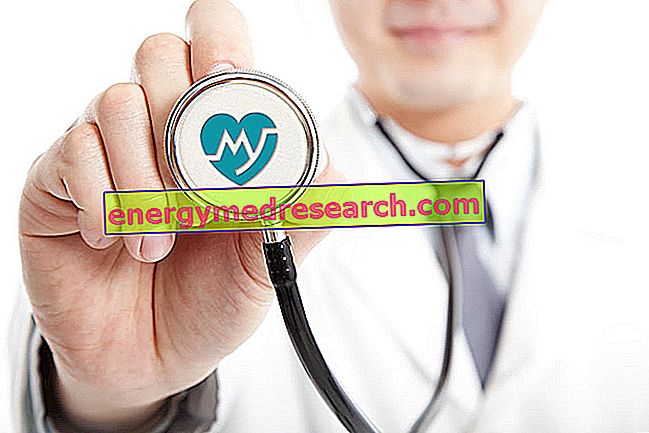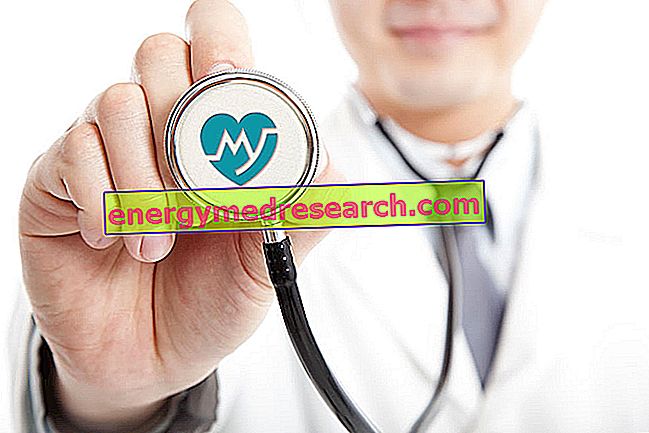Generality
Antithrombin III (ATIII) is a protein that helps regulate blood clot formation.

ATIII deficiency can be congenital (autosomal dominant transmission) or acquired (as in the case, for example, of nephrotic syndrome, estrogen-progestin therapy, disseminated intravascular coagulation, liver failure, etc.).
The antithrombin III test measures the activity (functionality) and concentration (quantity) in an individual's blood. This analysis is aimed at establishing the causes of inappropriate coagulation phenomena.
Note: ATIII and heparin
Antithrombin III has the property of making heparin pharmacologically active; for this reason, it is also called a heparin cofactor.
What's this
Antithrombin III is a plasma glycoprotein synthesized by the liver, which acts as a natural coagulation inhibitor .
Specifically, antithrombin III is capable of blocking the enzymatic cascade that leads to the transformation of fibrinogen into fibrin. In practice, this factor acts as a mild blood thinner .
Under normal conditions, when a blood vessel is damaged, a process (called hemostasis ) begins which leads to the formation of a clot and prevents further blood loss. In a series of steps, the reaction that leads to the activation of the coagulation factors ( coagulation cascade ) is triggered. Antithrombin III helps modulate this mechanism by inhibiting the action of these components (including thrombin and factors Xa, IXa and XIa) to slow down the process and prevent excessive and inappropriate clot formation (thrombosis).
If a sufficient amount of antithrombin III is not present in the plasma or it does not function properly, the clots can form uncontrollably. These situations can be mild to very serious.
Antithrombin III: Biological Role
Antithrombin III is a plasma glycoprotein with an anticoagulant action independent of vitamin K. As its name suggests, antithrombin is the most important physiological inhibitor of thrombin (IIa) and many other coagulation factors (VIIa, IXa, XIa, XIIa and especially Xa). The action of this protein, synthesized in the liver, is significantly enhanced by an endogenous substance, heparin, which can also be administered as a drug with anticoagulant activity.
The obstruction of a coronary artery by an abnormal clot (called thrombus ) deprives a more or less extensive area of the cardiac muscle of adequate blood supply. If this obstruction is not immediately removed, the oxygen deprived tissue rapidly suffers serious damage until death. It is therefore obvious that the excessive coagulation capacity of the blood and the reduced efficacy of the anticoagulant factors increase the cardiovascular risk synergistically.
Depending on the site where it occurs, the formation of thrombus (thrombosis) can produce different consequences, particularly serious when the clots are located at the level of the large cardiac vessels ( infarct ), cerebral ( stroke ) and pulmonary ( embolism, see: thrombosis deep venous).
If the blood tests and the patient's risk factors require it, it is possible to reduce the coagulation capacity of the blood by taking anticoagulant drugs, among which the best known is warfarin (Coumadin®).
Why do you measure
The antithrombin test measures the activity (functionality) and concentration (quantity) in an individual's blood.

The antithrombin test is generally prescribed about two months later by the thrombotic event and / or when there is no expected response to heparin anticoagulant therapy.
Tests of antithrombin III activity are usually required, along with other tests that evaluate disorders of excessive clot formation (eg coagulation protein C test and S protein), especially when a patient develops recurrent venous thrombosis .
Normal values
The blood sample is taken from a vein of the forearm according to the procedure typical of every other sample.
The reference values may vary from laboratory to laboratory; they are considered normal when they are between eighty and one hundred and twenty percent of the reference value.
High antithrombin - Causes
An increase in circulating levels of antithrombin III can be found in patients on coumarin anticoagulants, in anabolic steroid users and in the presence of vitamin K deficiencies, cholestasis and acute hepatitis.
Low antithrombin - Causes
Antithrombin III plasma concentration may decrease:
- Following therapy with oral contraceptives of the estrogen-progestin type;
- Nephrosis (for loss of protein with urine);
- In the presence of liver diseases that dampen its synthesis (such as cirrhosis);
Transplantation of the hepatic gland can also produce the same negative effect.
The finding of low antithrombin in a blood sample can also be associated with consumption coagulopathies, as occurs in the extremely dangerous CID (disseminated intravascular coagulation), characterized by the presence of numerous abnormal clots (thrombi) in the body's blood vessels. In this sense, even severe physical injuries predict antithrombin III deficiency.
Another very important aspect is that there is a disease called congenital antithrombin III deficiency, in which the deficiency has hereditary origins. This disorder leads to an increased risk of arteriovenous thrombosis and its clinical manifestations, which appear already during early adulthood. The main form is autosomal dominant, but there is also a second and rarer variant of autosomal recessive transmission.
A marker of cardiovascular risk
Reduced levels of antithrombin III can cause abnormalities of blood clotting, with an increased risk of suffering adverse cardiovascular events, particularly deep vein thrombosis, pulmonary embolism and, with less incidence, arterial thrombosis (heart attack and stroke).
Antithrombin III deficiency also negatively affects the therapeutic activity of heparin. For all these reasons, antithrombin III levels even slightly below normal are considered an important cardiovascular risk factor.
Therapeutic aspects
An antithrombin III concentrate is available on the market indicated in the presence of a congenital or acquired deficiency of this factor, which is also very useful for enhancing the effects of endogenous and exogenous heparin.
How to measure it
Antithrombin III examination is performed on a venous blood sample taken from the arm.
Preparation
Before harvesting, it is necessary to observe a fast of at least 8 hours, during which a small quantity of water is allowed.
The test is not recommended if the patient had been treated with heparin to counteract the thrombotic event. In this case, in fact, both the presence of the clot and the therapy followed to cure it would influence the antithrombin III test result.
Interpretation of Results
- If the activity and amount of antithrombin is normal, it means that this factor is functioning properly and the recurrent thrombotic episodes investigated are probably attributable to another cause.
- A decreased activity or amount of antithrombin III increases the risk of incurring inappropriate blood clotting. This deficiency is associated with more diseases and conditions, including liver disease, deep vein thrombosis, disseminated intravascular coagulation (CID) and nephrotic syndrome.
- Increased antithrombin levels are not normally considered a problem. In general, this increase is observed in the presence of pathologies (such as acute hepatitis or blockage of the bile ducts), renal transplantation, vitamin K deficiency or anticoagulation with warfarin (Coumadin®).



